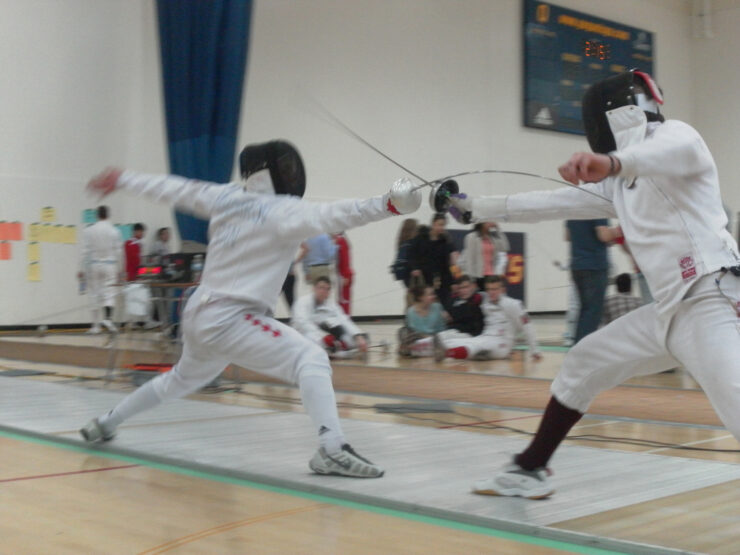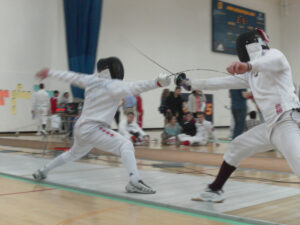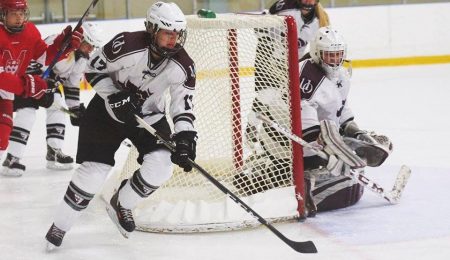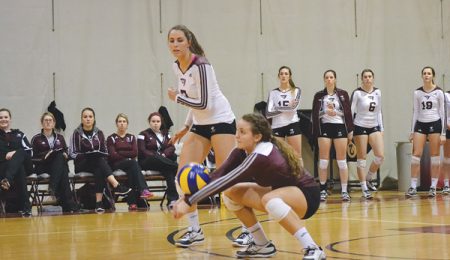Katherine DeClerq | Fulcrum Staff
“WHO DOESN’T LIKE swinging swords?”
Marc-André LeBlanc, second-year student at the University of Ottawa and veteran épéé fencer, explained fencing is a lot more than just waving around a blade, although it’s fun to think so. The University of Ottawa fencing team transcended club status on Feb. 11 and 18 when they competed in their first Ontario University Athletics (OUA) tournament and came out with top results.
LeBlanc explained the shock of being able to play on the provincial level really set in when the competitive club found out two months ago they were eligible to compete.
“We had been pushing to gain varsity or OUA status for quite a while, and in September we had Judge Peter Wright, one of the dads of someone who fences at our school, in talks with the university to try and get the program back in,” he said.
“In the end of December we heard we officially had it, but OUAs were in two months so we had to get going.”
These athletes trained hard, recruiting from their recreational classes in order to complete teams, and entered as many students into the competition as they could. The men’s fencing meet on Feb. 11 saw the épéé team, consisting of sixth-year Patrick Wright, third-year John Wright, third-year Adam Desjardins, and LeBlanc, bring home a gold medal. LeBlanc consequently received a first place in individual épéé with Patrick Wright finishing in a close second.
The second competition saw the women’s team match their male counterparts snatching up first place in the foil. Graduating student Megan Apsimon took second in the individual event with rookie Amalissa Hum in third.
“Since this is such a young program, we are just concentrating on getting [the team] experience,” explained LeBlanc. “Then we can concentrate on more tactical things. In coming years we are hoping to do more competition training. [Because] we only had two months, we didn’t have a chance to bring them out and compete and see what that’s like.”
Although the competitive club has been unable to compete in the OUA until this year, that doesn’t mean the athletes have just been playing recreationally. Many fencers have gone on to compete at the national and international level through the Ottawa Fencing Club. LeBlanc and John Wright competed in the North American Cup in January and LeBlanc will find himself in Germany and Turkey for fencing world cup competitions in the next few months.
LeBlanc encourages students to come out and try one of their recreational programs offered at the U of O, including 10-week sessions and a free one-week trial.
“I know the beginner class is just to have fun and get a good view of the sport,” said LeBlanc, who teaches one of the classes. “Once you are in the intermediate it is a mixed bag: You have guys who are there for recreation and those who are competitive. We foster a good atmosphere of fun while working them fairly hard.”
Now that the team is part of the OUA, they want to try and expand their program and recruit new members. LeBlanc challenges students to try out the sport.
“One of the hesitations for fencing is that it isn’t a real sport, not overly athletic. I would just challenge [those who believe that] to come out and try it—then decide whether or not it’s a good workout. And beyond that, we always foster an environment of just good times.”
The three blades in fencing
Foil: The foil is a point weapon and can only be used to hit with its tip. Contact is limited to an opponent’s chest, side, back, and groin.
Épéé: Historically, the épéé is taken directly from dueling, or as LeBlanc says, it is “the truest of the weapons if you will (but I’m actually saying that because I’m biased).” The whole body is targeted and it also is a point weapon.
Sabre: The sabre is a whole blade, so you can cut as well as hit your opponent. The target is the waist up, including arms and head.






